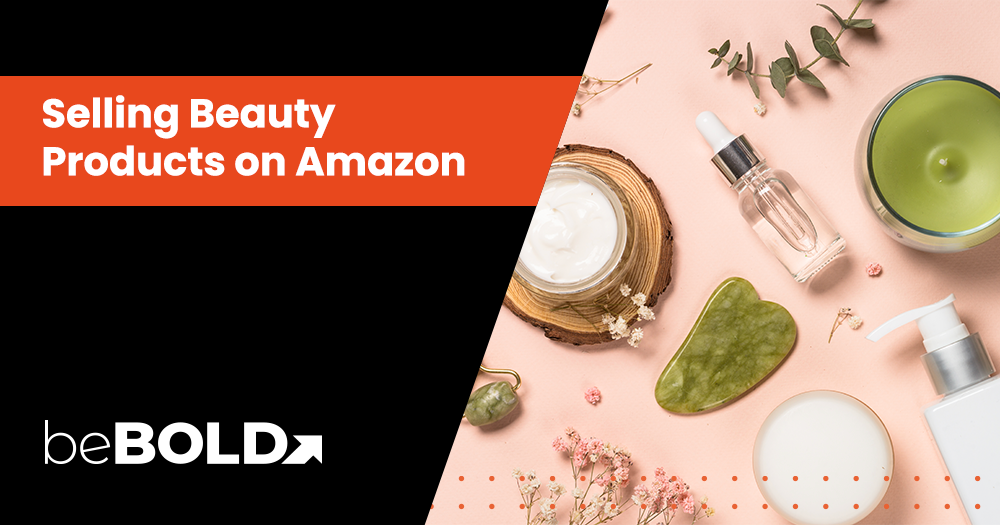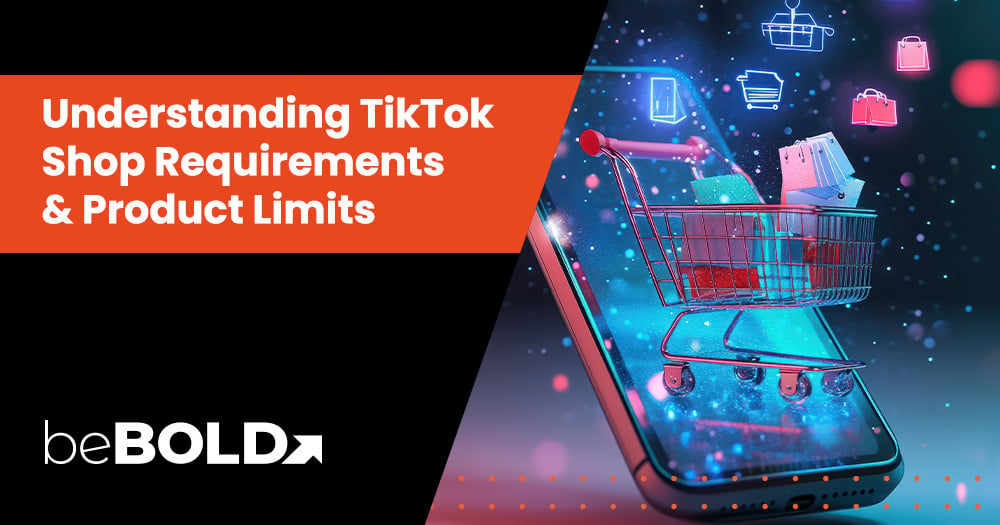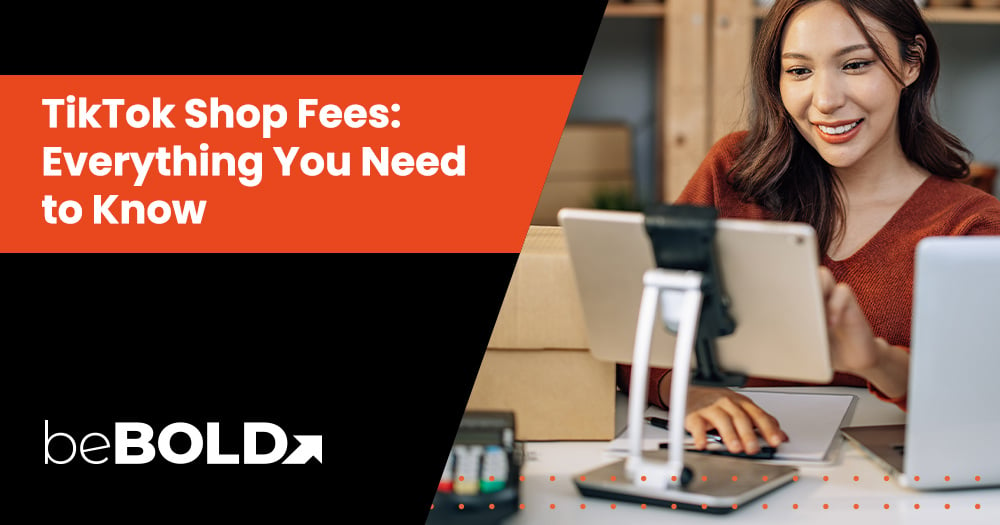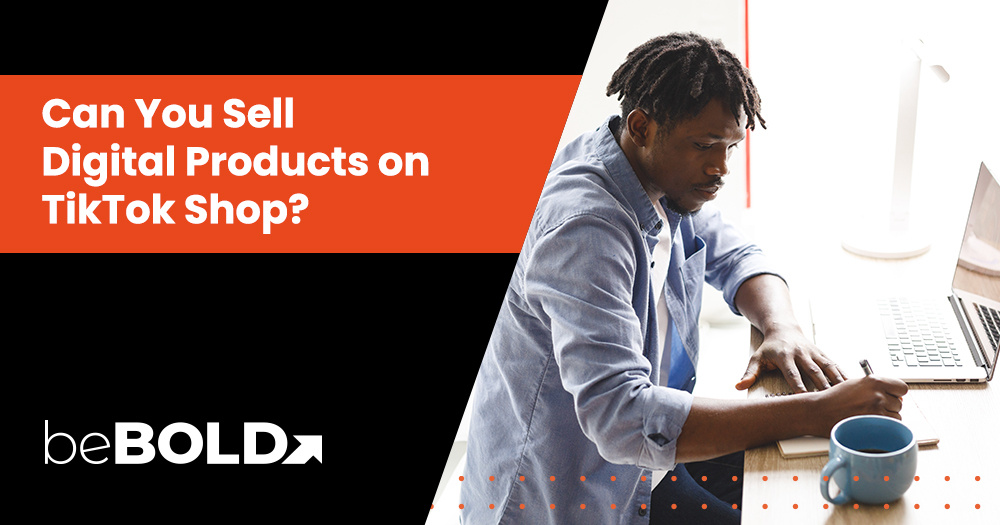Selling in the beauty category on Amazon is a double-edged sword. On the one hand, your beauty products get in front of millions of customers. On the other hand, your products have to compete with hundreds and thousands of other products, including various product examples.
Almost all the name-beauty brands have already joined Amazon, which is why it can be increasingly difficult for a new brand to get its fair share of the market. This blog post will discuss everything you need to know about Amazon Beauty, the competitive landscape, the categories, and valuable tips from our Amazon Beauty Consultants.
What Are Amazon Beauty Products?
Amazon Beauty products in the beauty products category encompass a wide range of items that cater to personal care, grooming, skincare, haircare, makeup, and more. These products are sold by major established beauty brands and smaller, independent sellers wishing to tap into Amazon’s vast customer base. The beauty category on Amazon is highly diverse, with a variety of price points, product types, and specialized niches available.
Amazon Beauty products include but are not limited to:
- Skincare Products
- Haircare Products
- Cosmetics and Makeup
- Personal Care Items
- Fragrance
- Wellness and Beauty Tools
With the rise of online shopping, Amazon has become a go-to marketplace for beauty enthusiasts looking for both high-end and affordable beauty solutions. These products are available in various forms, such as organic, vegan, cruelty-free, and eco-friendly, catering to the growing consumer demand for conscious beauty choices.
Amazon Beauty – everything you need to know
.png?width=250&height=500&name=Selling%20beauty%20products%20on%20amazon%20(1).png)
In the summer of 2017, Amazon made the beauty category ungated for the first time in history. Before that, brands needed to go through a tedious approval process in order to list their products in the beauty category. The retail giant also introduced three new subcategories that can be accessed with a specific approval process: luxury beauty, Professional Beauty, and Indie Beauty.
So, although Amazon seems to have opened up a beauty category for every seller, they have created an exclusive club where all the actual selling happens. Selling outside this club means your brand will need help gaining exposure, traffic and sales.
Most of the name beauty brands fall into these coveted, invite-only subcategories, leaving the other sellers on their own. Before we discover how a brand outside this circle can gain more exposure, let us first discuss each category.
1) Amazon Premium Beauty
As per Amazon, Premium (Luxury) Beauty offers a “curated collection of the world’s most sought-after luxury brands.” This category includes brands such as unmistakable La Roche Posay, Haus Laboratories (Lady Gaga), and some lesser-known brands. Amazon doesn’t reveal what it takes for a brand to make its way to the Premium Beauty category, so let’s keep guessing.
2) Amazon Professional Beauty
Quoting Amazon, “Professional Beauty contains a curated selection of high-quality products that can be found in professional settings such as spas, salons and dermatologist offices.”
This category contains all the items a professional might need to care for their customers’ hair, skin, nails, and also hair removal. Professional Beauty is further divided into two categories: Professional Skin Care and Salon & Spa.
3) Indie Beauty
Indie Beauty was launched in 2018 and is the newest of the three subcategories. It includes cosmetic and skincare brands not directly that at mass retailers such as Target, Walmart or Ulta Beauty.
Brands can be eligible for Indie Beauty stores if they are at least 50% owned by an independent operator and not carried on by any major retailers. Amazon also states that brands need to have an active storefront, and all the products should be Prime-eligible.
.png?width=602&height=250&name=Selling%20beauty%20products%20on%20amazon%202%20(1).png)
Top 10 tips to survive & thrive in the Amazon beauty category
Let’s discuss how you can make your way from the ungated category to one of the exclusive clubs. Amazon wants to promote brands that are already getting attention and selling well in their retail environment or ungated category.
The retail giant isn’t even interested in brands that are not recognized. If you are already selling in the Amazon Retail Beauty category and want to get noticed, here are a few tips to help you out:
#1: Do what Amazon does
Today, Amazon ranks alongside Walmart as a top destination for shopping for beauty products to reach millions of potential customers. With its super-fast 2-day shipping policy, competitive pricing and the widest selection of products, Amazon is snapping up the market share in the beauty industry.
In short, customers come to Amazon because they have a pleasant experience. Do the same with your shoppers. Read the reviews and find what upsets them. Keeping that in mind, fix your product, the detail page, price, shipping or the images - but make sure you are winning the buy box.
In addition, conduct surveys with your existing customers to engage with customer feedback and find out what they have to say about your products, what are the top 3 reasons why they love your product & what are the top three reasons why they don’t. If you can solve these pain points and improve the shopping experience of your customers, then nothing can stop you from becoming a successful beauty seller on Amazon.
#2: Who says men don’t care for beauty products?
It might surprise you, but men buy beauty sellers more frequently than women. The stereotypical notion that men shouldn’t be using skincare products has been receding in recent years.
Studies show that the men’s personal care industry is predicted to hit $166 billion by 2022, and the market for men’s grooming will grow 8.9% through the year 2025. Men are exploring skincare products, products that can help groom their beards and hair, as well as cosmetic products.
#3: Woo Gen Z Shoppers
Where do Gen Z shoppers spend the most time? Right – social media. They are mobile natives & social media greatly influence their lives. About 45% of Gen Z’ers say digital and social media influencers have influenced their purchases. So why not leverage social media to increase your customer base? Hire a beauty or fashion influencer and get them to advertise your product to increase reach.
#4: Build a brand
To say that the beauty industry has a little bit of competition would be an understatement. There is a pool of products, and it becomes difficult for the sellers to differentiate their product from the next. One of the best ways to stand out is by building a brand. When shoppers trust you as a brand, it will be easy to survive and thrive, no matter how cutthroat the competition gets.
Although it takes time, effort, and investment to build a brand, the perks make it all worth it. Besides, Amazon offers several tools that are solely focused on building and promoting your brand on the platform. And the best part is that they are free. Be it enhanced brand content (A+ pages), customer service, or storefronts, all the sellers with brand registries can leverage it to tell their unique stories and showcase their ethics to customers.
#5: Bring outside traffic
You do realize that if you have just listed the product, the chances of your product ranking on the first page are practically zero. So, how are you supposed to get your products in front of shoppers? The best way to do this is by driving off Amazon traffic to your detail page.
This supplementary traffic helps make an impression before any extra noise comes in. As you get momentum in sales, your organic rank will increase, and eventually, you’ll also rank with the big boys on page #1.
#6: Know your target audience
Are you selling organic and all-natural products or a niche product for a specific skin type? Understand your target audience and work to bring them to your detail page, including comprehensive product descriptions. Once you identify your target audience, it will be easier to build a customer base. Your advertising campaigns, detail pages, images, and everything should only be targeted to woo your niche audience. This will eliminate the shoppers who simply don’t value and aren’t interested in what you have to offer. Make sure to always look at your analytics.
#7: Make prettier packaging
Your product packaging is synonymous with your brand. A beautiful packaging conveys a positive image of the contents. Make sure you look like those in Luxury Beauty stores and speak to those who are buying it. Don’t forget to follow Amazon’s requirements for the original manufacturer’s packaging and shipping requirements, or else you will have a hard time getting the product shipped to the customers.
#8: Get more reviews
.png?width=467&height=65&name=Selling%20beauty%20products%20on%20amazon%203%20(1).png)
And when you think you have enough, get more. Reviews are the social proof that plays a critical role in increasing your conversion rates. In fact, without reviews, your PPC campaigns won’t even work because no matter how much traffic you bring to your detail page, it won’t convert if your listing doesn’t have enough five-star reviews.
There are several white hat tricks to get more reviews on Amazon, including enrolling in Amazon Vine or Early Reviewer programs, utilizing product inserts and using 3rd party automated email responders. That’s not it. You should also reply to negative reviews responsibly so as to reduce their impact.
#9: Dress up your listing
Keyword-rich titles, informative bullet points, story-telling descriptions, enticing images, and branded A+ Content – your product listing needs to meet the cosmetic label requirements and be at your best. Even if you are a relatively new brand, your listing detail pages should look like (and even better) than Amazon Luxury Beauty brands. Hiring Amazon Beauty Consultants from beBOLD Digital is the best way to do this.
#10: Leverage Amazon Advertising
When you sell in the beauty category, using PPC isn’t optional. Advertising can help bring your product to the first page beside the big-box brands. When done right, it can help you instantly increase your reach, visibility and traffic, which is extremely critical for your product, especially the newly launched products. Always remember that your advertising campaigns should have a snowball effect; gradually, it should lead to organic sales and brand awareness.
How to Get Approval to Sell Beauty Products on Amazon?
Selling beauty products on Amazon is a great opportunity, but gaining access to the platform’s coveted beauty category requires meeting specific criteria and following the right processes. The approval process can be a bit daunting for new Amazon sellers, especially when navigating Amazon’s requirements. Let’s break it down to make the process easier to understand and give you a clear roadmap.
Amazon’s Requirements to Sell Beauty Products
You must meet specific eligibility requirements before listing your beauty products on Amazon. Here’s what you need to do to get started:
Seller Account: First, you need a professional seller account on Amazon. If you’re just starting out, it’s best to upgrade from an individual account to a professional one, as beauty products often require the added benefits that a professional account offers.
- Brand Authorization: You may need to show proof of brand authorization for many beauty products, especially those from established brands. If you're selling well-known beauty brands, Amazon will ask for documentation proving you are an authorized seller of those products.
- Product Approval: To sell products in the beauty category, Amazon may require you to submit your listings for approval. This can include submitting images, descriptions, and other details for review. Depending on the type of beauty product (e.g., skincare, makeup, etc.), you may also need to provide additional certifications or tests to prove product safety and authenticity.
- Quality Standards: Amazon requires sellers to meet specific quality standards for beauty products. This ensures that the products listed on the platform are safe and effective for consumers. For example, cosmetics and skincare items should comply with FDA regulations and industry standards.
UPC Codes: You’ll need valid UPC or EAN codes for each product. These barcodes are essential for Amazon to track and manage inventory and sales. If you’re a private label seller, you’ll need to get these codes through a licensed provider.
Prohibited Beauty Products
Not all beauty products are eligible for sale on Amazon. It’s essential to be aware of what you cannot sell, including products without safety data, to avoid getting your account suspended or facing penalties. Here are some of the key categories of prohibited beauty products:
- Expired Products: Any beauty products that have expired or are near expiration are not allowed on Amazon. Ensure that all items listed have a long shelf life before you list them.
- Counterfeit Products: Selling counterfeit beauty products is strictly prohibited. Make sure that all your products are authentic and come from trusted suppliers to maintain your credibility on Amazon.
- Hazardous Ingredients: Amazon does not allow products containing dangerous or restricted chemicals. Ensure that your beauty products comply with safety regulations and ingredient lists.
- Unapproved Claims: Avoid making health claims unless the product is FDA-approved. For example, claiming that a skincare product "cures acne" or a hair product "regrows hair" without evidence could result in your listing being removed.
- Alcohol-based Products: Certain alcohol-based products, especially those in large quantities, might require special handling or can be prohibited from being shipped via Amazon’s standard shipping methods.
Ways to Sell Beauty Products on Amazon
While getting approved to sell in the beauty category can seem complicated, it’s worth the effort if you want to tap into Amazon’s vast consumer base and capitalize on high demand. Here are the different routes you can take to list your beauty products:
- Sell in the Ungated Beauty Category: If you’re new to selling on Amazon, you’ll likely start in the ungated section of the beauty category. This section is open to all sellers, but the competition is fierce.
However, it gives you the opportunity to build your brand, gather reviews, and make a name for yourself before applying for higher-tier approval.
- Apply for Approval to Sell in Premium or Professional Beauty: Once you’ve gained some traction in the ungated category, you can apply to sell in Amazon’s more exclusive categories, like Premium (Luxury) Beauty or Professional Beauty.
These categories are reserved for established brands, and being a part of them can give your products more visibility and credibility through influencer marketing.
- Partner with Amazon’s Beauty Consultants: If you’re struggling to get your products approved or want to enhance your listings, consider working with Amazon Beauty Consultants.
These experts can guide you through the approval process, help improve your product listings, and increase your chances of being noticed by Amazon’s algorithm while ensuring that your product information is accurate and compliant.
- Leverage Amazon’s Brand Registry: Registering your brand with Amazon’s Brand Registry gives you access to powerful tools that can help protect your brand and improve your product listings. This is especially important if you sell private-label beauty products or want to avoid selling counterfeit products under your name.
- Participate in Amazon’s Vine and Early Reviewer Programs: If you’re looking to boost your credibility and get more reviews, joining Amazon Vine or the Early Reviewer Program can help. These programs allow trusted reviewers to try your products and provide feedback, which can help increase trust in your brand and products.
By following these steps and being proactive, you can successfully navigate Amazon's approval process and confidently start selling your beauty products.
Trending Beauty Products on Amazon
As the beauty industry continuously evolves, Amazon has become a leading marketplace for the latest trends in trendy and most in-demand beauty products. We’ve compiled a list of trending beauty brands and products that are gaining massive attention.
Top Beauty Brands
Several beauty brands have seen significant growth and are performing exceptionally well on Amazon. These brands have stood out due to their innovative products, strong customer loyalty, and effective marketing strategies. Here are some top-performing beauty brands:
- Fenty Beauty by Rihanna
- Revenue Growth: Fenty Beauty has experienced a 144% increase in monthly revenue in the past 30 days.
- Top Seller: Fenty Beauty Match Stix Matte Skinstick Amber – A contour product with cool undertones and a matte finish.
- Fenty Beauty continues to break boundaries with its inclusive approach and products that cater to diverse skin tones. The brand’s innovative products and strong social media presence have propelled it to the top of the charts.
- Huda Beauty
- Revenue Growth: Over the past three months, hudabeauty.com revenue has experienced growth of 5% compared to the preceding three months.
- Top Seller: Huda Beauty Easy Bake Loose Baking and Setting Powder (Pound Cake)
- Known for its flawless makeup products, Huda Beauty remains a go-to brand for beauty lovers. This setting powder is trendy for its long-lasting, smooth finish.
- The Body Shop
- Revenue Growth: The Body Shop's monthly revenue increased by 13%.
- Top Seller: The Body Shop Ginger Scalp Care Conditioner (Vegan)
- This brand’s focus on ethical, vegan products has resonated well with consumers, especially the Ginger Scalp Care line, which has garnered rave reviews for its nourishing qualities.
Top Trending Beauty Products
These beauty products have been gaining traction and showing impressive revenue growth, reflecting the current beauty trends on Amazon. Here are some of the standout products that consumers are flocking to:
- Heatless Curling Rod Headband
- This product became a sensation after going viral on TikTok. The heatless curling rod headband offers a safer, gentler way to achieve curls without using hot tools, making it a favorite for those looking to protect their hair from heat damage.
- Particle Men’s 6-in-1 Face Moisturizer
- Men’s beauty and skincare products are making a significant impact on Amazon. This multi-functional face moisturizer addresses various skincare needs, and its popularity is a clear sign of the growing demand for men’s grooming products.
- Advanced Clinicals Aloe Vera + Vitamin C + Hyaluronic Acid Face & Body Cream
- Known for its hydrating and soothing properties, this face and body cream is a favorite among consumers. With an impressive number of positive reviews, it shows how combining powerful ingredients like aloe vera, vitamin C, and hyaluronic acid can create a product with mass appeal.
These trending products reflect what consumers are looking for in today’s beauty market: innovation, sustainability, and multi-purpose solutions, including new products. Whether you’re a beauty enthusiast searching for the latest must-have products or a seller aiming to tap into the growing beauty market, staying updated on these trends is key to success.
Are you ready to sell beauty products on Amazon? beBOLD Digital Expert Can Help You
Selling beauty products on Amazon can be overwhelming, especially with the complexities of brand visibility, competition, and meeting Amazon’s requirements. beBOLD Digital is here to ease the process!
We understand the challenges of standing out in a crowded market and can help you optimize your listings, improve your brand’s visibility, and increase conversions. With our expertise in Amazon marketing and brand strategy, we provide tailored solutions that ensure your products reach the right customers. From enhancing product listings to Amazon advertising, we can help you every step of the way.
Don’t let the competition hold you back—schedule a discovery call with us today, and let us help you take your beauty brand to the next level!
Frequently Asked Questions
Can anyone sell beauty products on Amazon?
Not everyone can sell beauty products on Amazon. Sellers must meet Amazon’s requirements, including approval for specific categories and providing documentation like a professional seller account and proper product labeling.
What are the top-selling beauty categories on Amazon?
The top-selling beauty categories on Amazon include skincare, makeup, hair care, personal care, and fragrances. Products in these categories, especially those with high customer ratings, tend to perform well.
How do I handle counterfeit claims for branded beauty products?
To handle counterfeit claims, ensure you source products from authorized distributors and provide clear proof of authenticity. Register with Amazon's Brand Registry for additional dispute protection and support.
What are the advantages of selling beauty products on Amazon?
Selling beauty products on Amazon offers a vast customer base, global reach, access to Amazon's trusted platform, fulfillment services with FBA, and tools for advertising and marketing. With high traffic and credibility, Amazon is a lucrative marketplace for beauty products to boost sales effectively.








Comments